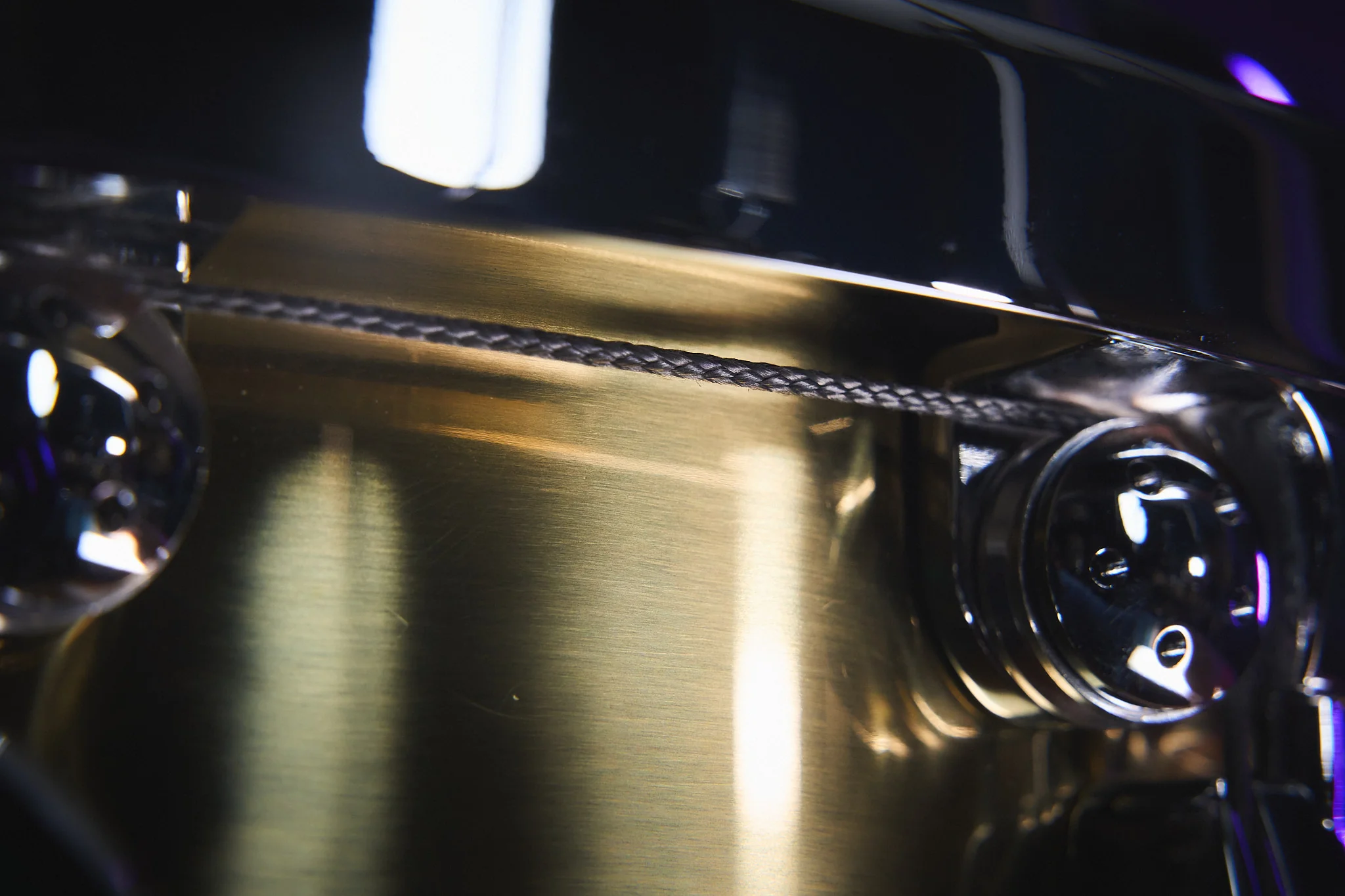Bringing Dialtune to market wasn't just about big ideas; it was about nailing the details, like testing hundreds of cables to find the perfect match for our system. Our journey started with inspiration from the BOA system, known for its use on snowboard boots. This led us to experiment with a thin, aerospace-grade metal cable in our first prototype. It was a solid start, but we quickly hit some roadblocks:
- Bulkiness: The steel cable we needed for strength ended up being too thick for our design.
- Rigidity: We needed a cable that could handle tight turns without losing strength. The flexible ones we found just couldn’t handle the tension a snare drum needs.
- Memory Effect: Metal cables would remember their shape once coiled, causing bends or kinks that messed with performance.
It became clear metal wasn't going to cut it for what we needed. That's when we turned to the past, inspired by the vintage, rope-tuned field drums, and started thinking about modern materials.
The Search for the Perfect Cable
When we stumbled upon Kevlar rope, it was a game-changer. This stuff was thin, incredibly strong, flexible, had no memory, and didn’t stretch. Perfect, right? We found a supplier that made a very specific specification of Kevlar rope for spearfishing gear and we used it in our first full prototype for NAMM 2019. But as luck would have it, right after we decided it was the perfect material, they stopped making it.
Finding a reliable source for this kind of high-tech rope was tough. The big manufacturers could make it, but without a massive order, it was hard to get what we needed. We had to go back to the drawing board.
Engineering Our Solution

We built a machine to test cables, replicating the high tension and wear a snare drum would put them through. The list of what we needed was long:
- No Stretch: The cable had to stay the same length under tension.
- Flexibility: It needed to navigate tight spaces and corners in our design.
- Strength: It had to hold up under a lot of pressure, without breaking a sweat.
- No Memory: After being coiled or bent, it had to go back to its original shape.
- Durability: It had to withstand being coiled and uncoiled repeatedly without wearing out.
Our search led us through a variety of polymers, from Dyneema to Spiderline, and even into fishing and carbon materials. We tested hundreds of options, looking for that perfect combination of features.
Finding the "Secret Sauce"
Finally, a U.S. manufacturer delivered what we'd been searching for. This cable hit all the marks – it's our secret sauce. We're not spilling the beans on the exact blend, but it's the best we've tested by a long shot. With this cable, drummers can tune and retune for months without issues. And for those who find their perfect sound and stick with it, this cable will last even longer.
We've had snares in our studio that haven't needed a cable change for over two years. And if you do need to swap it out, it gets easier with a bit of practice – from fifteen minutes down to less than five.
The Takeaway
Creating something simple and effective like Dialtune took a lot of hard work and iteration. We're proud to see our drums making music across basements, studios, and stages all over. It's been a journey, but seeing our drums out there, making it easier for drummers to do their thing, makes it all worth it.


Leave a comment